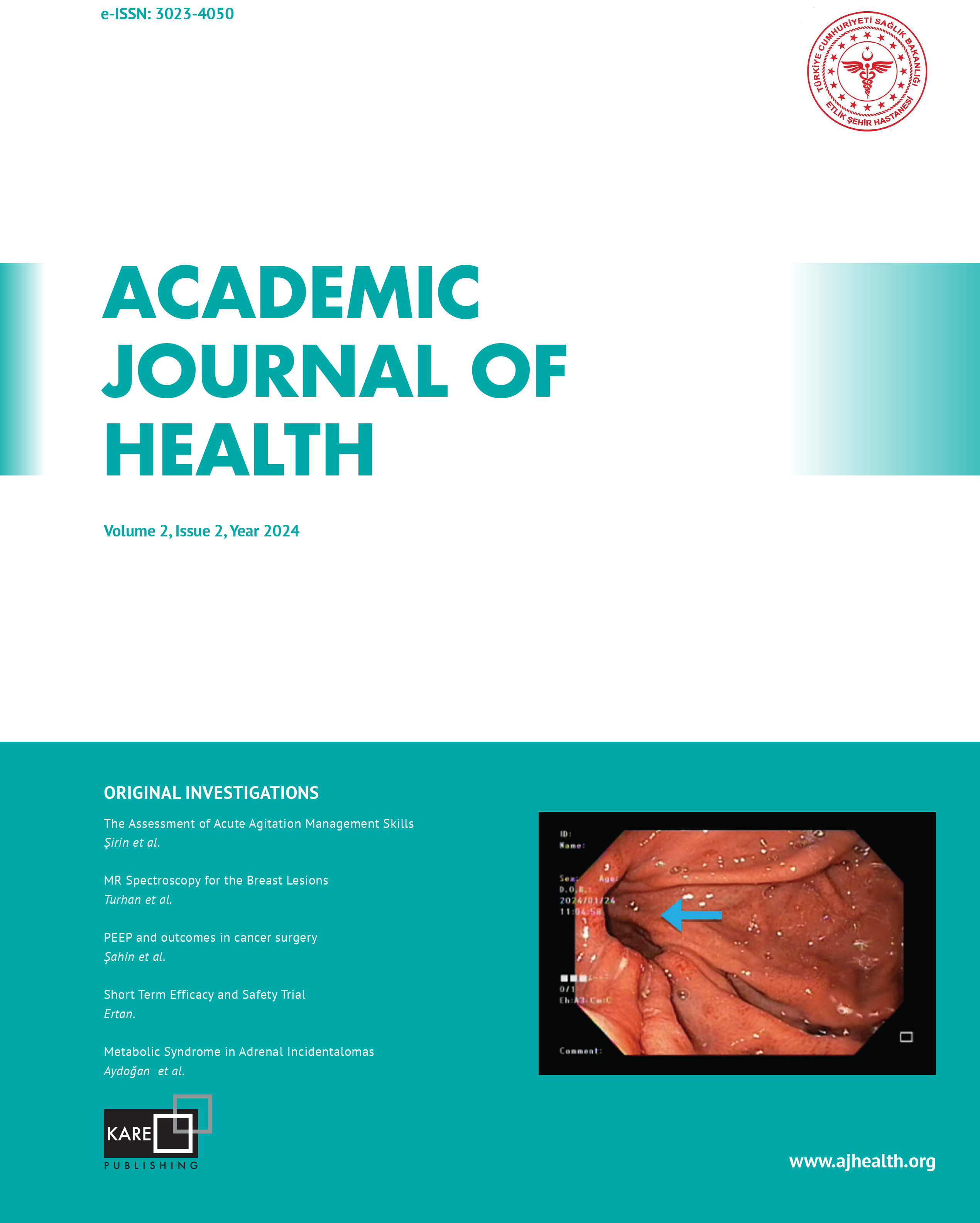Percutaneous Balloon Valvuloplasty for the Treatment of Isolated Pulmonary Valve Stenosis in Infants - A Single Centre Experience
Utku Arman Örün1, Ilker Ufuk Sayıcı2, Tamer Yoldaş1, Mehmet Tasar4, Murat Koç5, Dilek Dilli31Department of Pediatric Cardiology, Ankara Etlik City Hospital, Ankara, Türkiye2Department of Pediatric Cardiology, Ministry of Health, Ankara, Türkiye
3Department of Neonatology, Ankara Etlik City Hospital, Ankara, Türkiye
4Department of Pediatric Cardiovascular Surgery, Ankara Etlik City Hospital, Ankara, Türkiye
5Department of Cardiovascular Surgery, Ankara Etlik City Hospital, Ankara, Türkiye
INTRODUCTION: Pulmonary stenosis (PS) is a common congenital heart defect characterized by obstruction from the right ventricle to the pulmonary arteries. Few studies evaluate the long-term outcomes of the procedure, especially the degree of pulmonary regurgitation. We assessed the outcomes of infants following valvuloplasty for pulmonary valve stenosis.
METHODS: We conducted a retrospective analysis of children with pulmonary valve stenosis who underwent pulmonary balloon valvuloplasty (BPV) at a single institution. Clinical summaries, catheterization data, and echocardiographic data were reviewed. The inclusion criteria were isolated balloon pulmonary valvuloplasty for pulmonary valve stenosis, with age <2 months at the time of intervention.
RESULTS: Between 2006 and 2019, 104 patients underwent BPV for isolated PS. A total of 78 patients met the inclusion criteria. The median age at valvuloplasty was 6.5 days (1-60 days). The median last follow-up after valvuloplasty was 23.5±33.6 months. Pre-operative peak instantaneous pulmonary gradient (PIPG) measured by echocardiography was 70 (35-120) mmHg, which reduced to 26 (10-70) mmHg post-procedure. At the last follow-up, the gradient was 25 (0-100) mmHg. The mean balloon/annulus ratio was 1.18±0.12. Concerning the development of pulmonary regurgitation, mild pulmonary regurgitation was most observed [in 36 patients (46%)], and no patient developed severe regurgitation. Additionally, a correlation was found between female gender, preoperative gradient, pulmonary valve structure, and high residual gradient (p<0.0001, R>700).
DISCUSSION AND CONCLUSION: Pulmonary balloon valvuloplasty remains a safe and effective treatment for children with isolated pulmonary valve stenosis, with excellent long-term outcomes and no mortality. Although the rate of reintervention is high in cases with a low mean balloon/annulus diameter ratio, the rate of pulmonary regurgitation is significantly lower.
Manuscript Language: English




